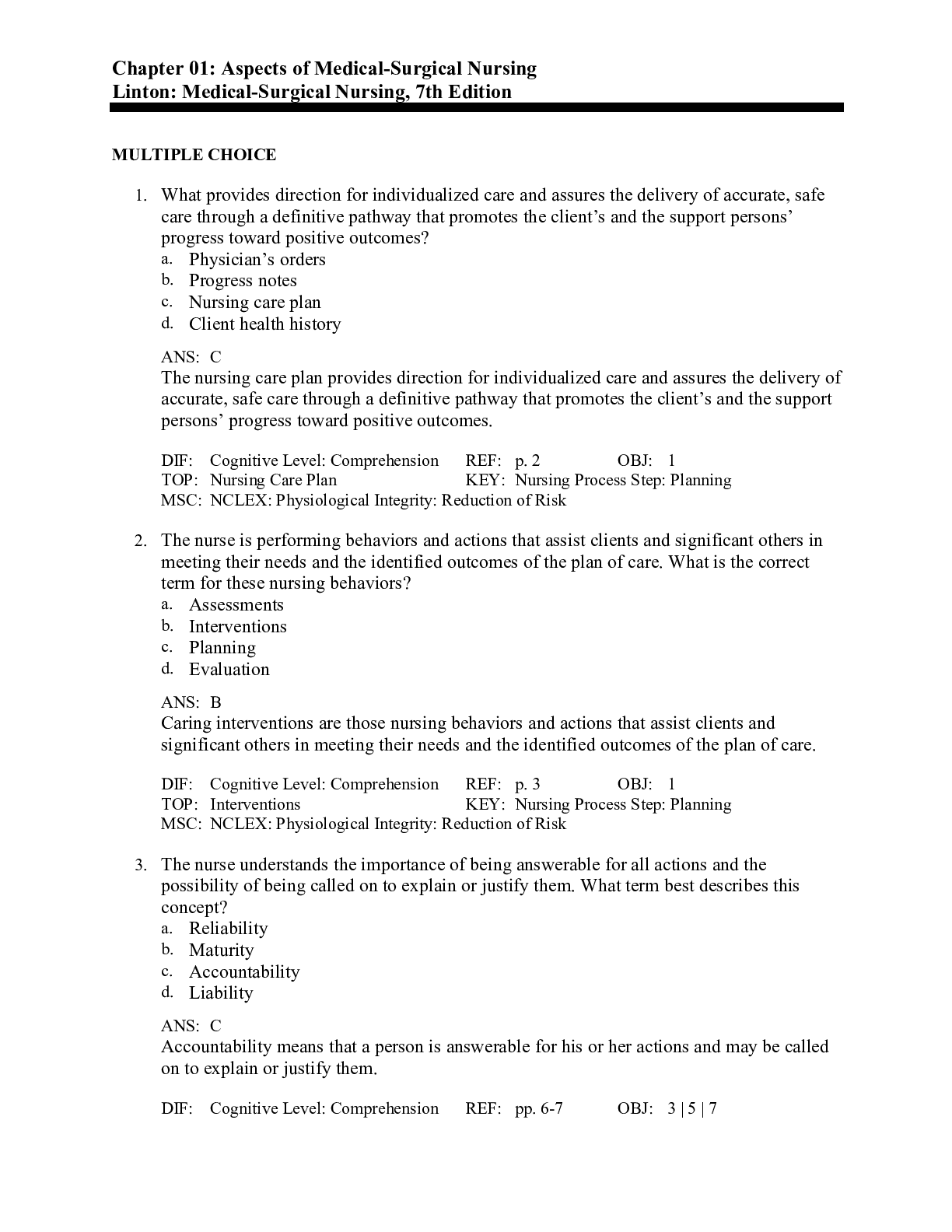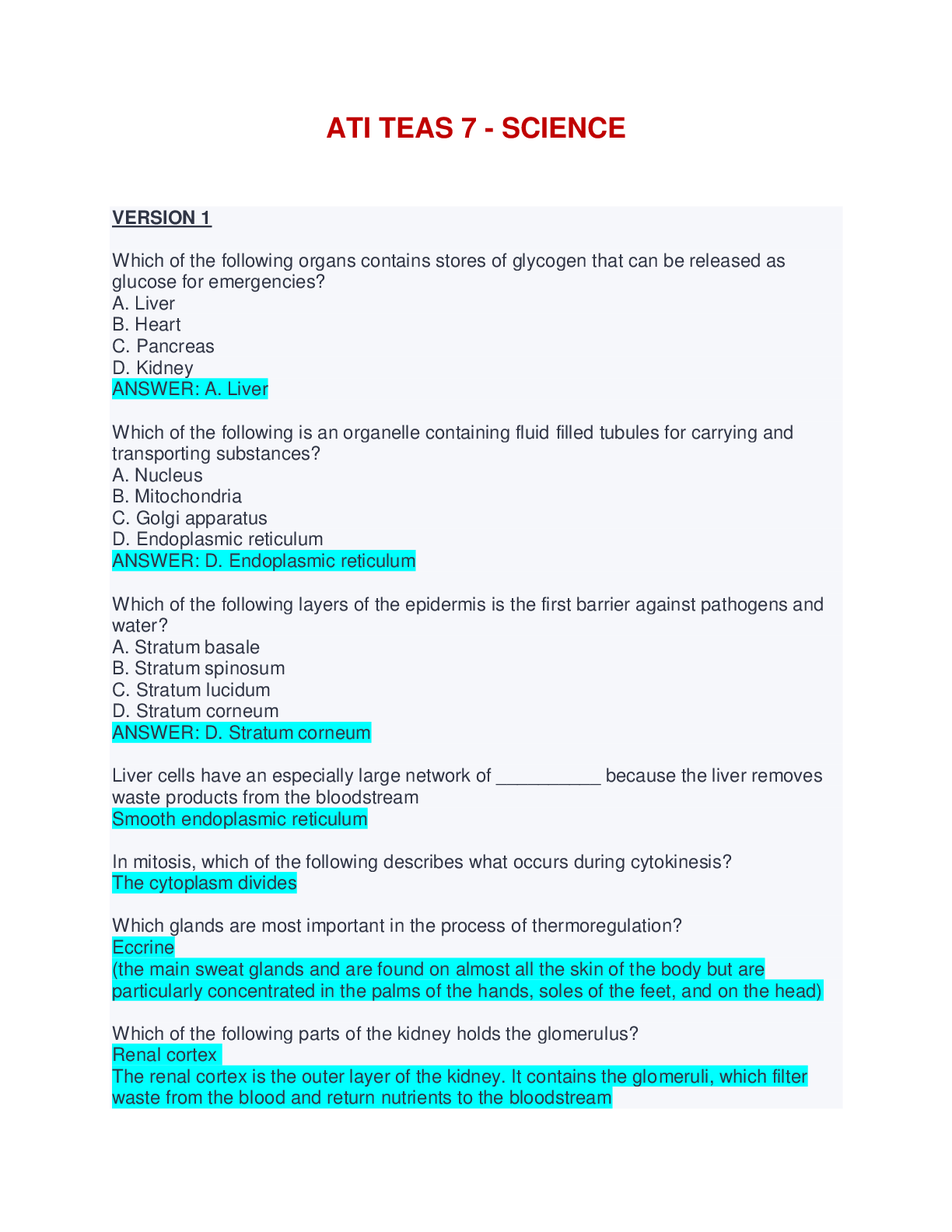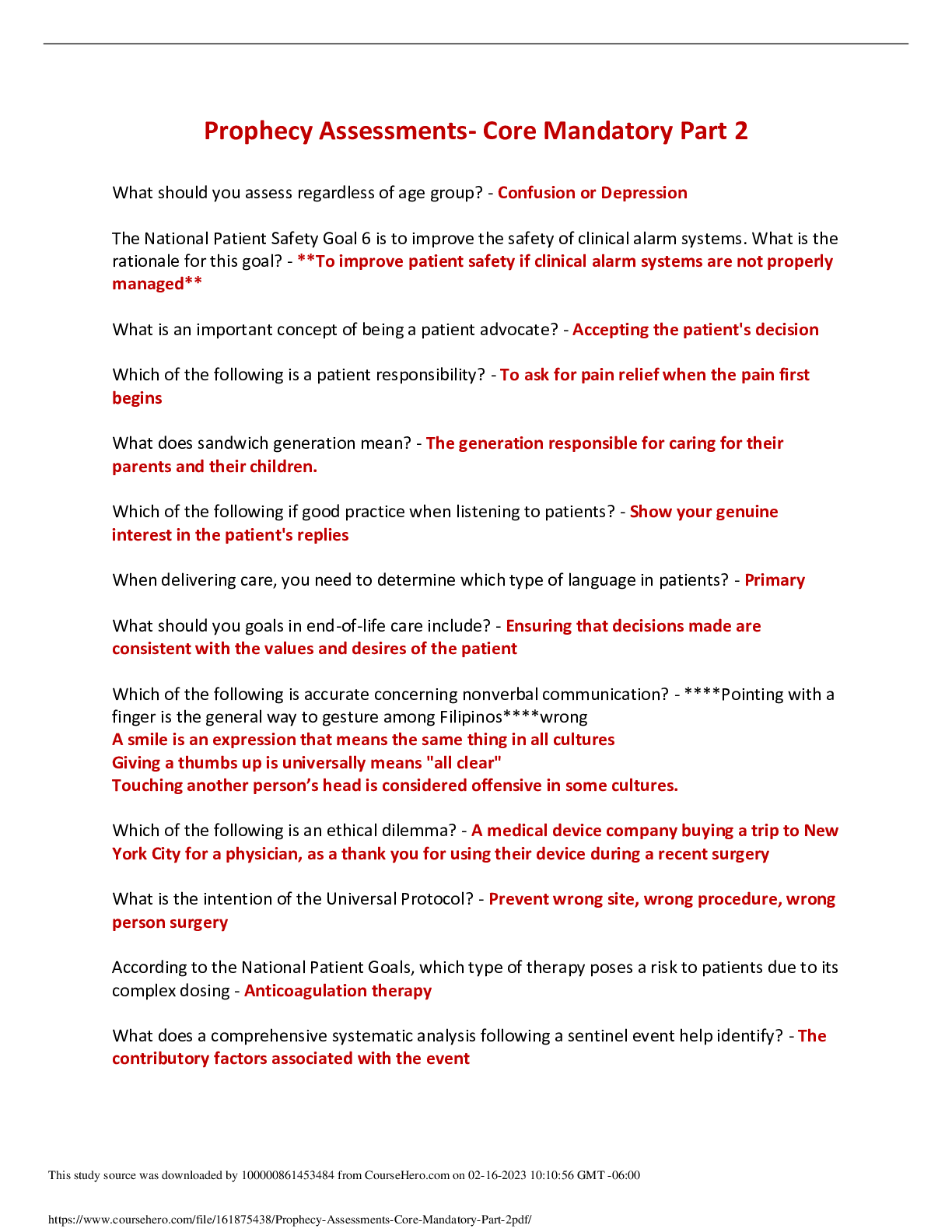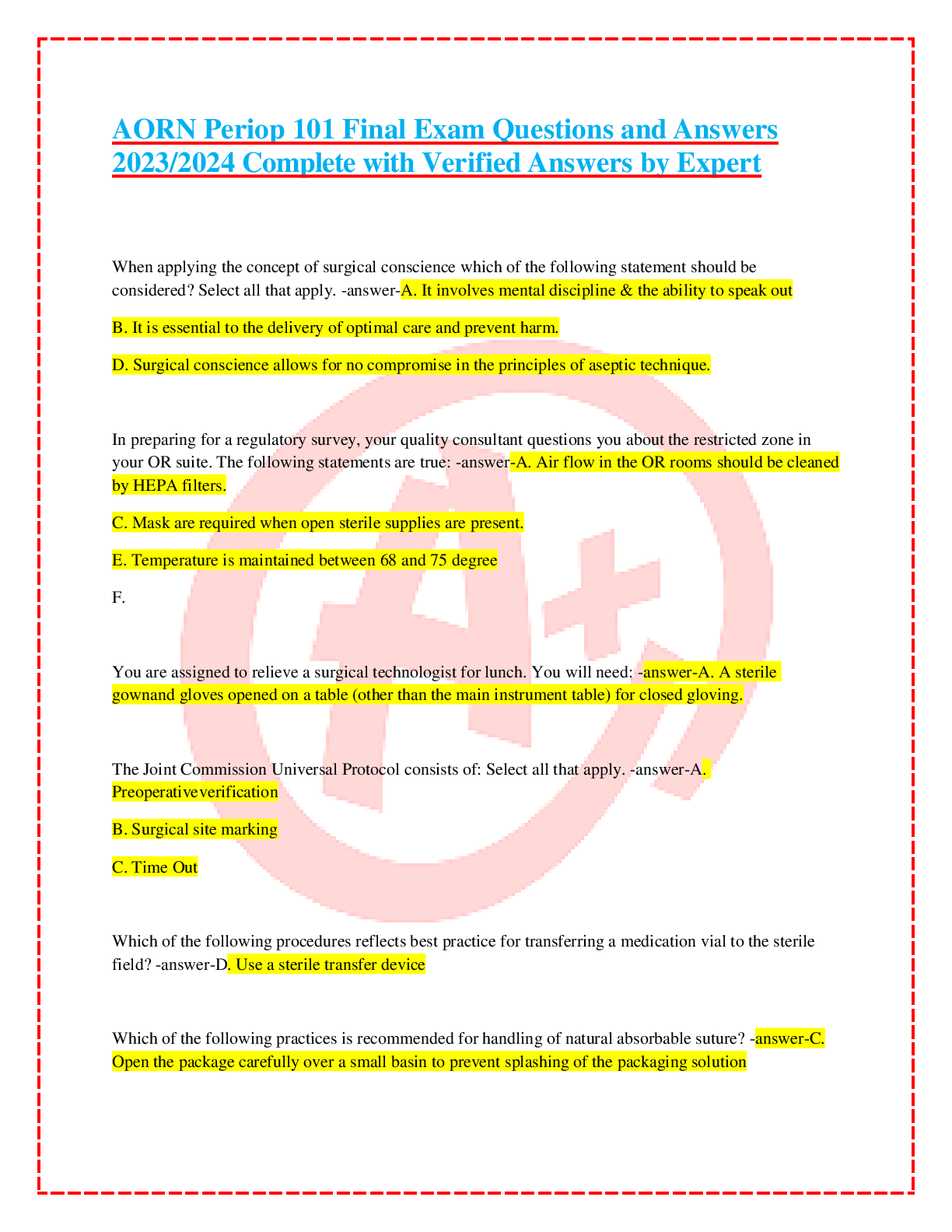Micro Biology > EXAM > Microbiology final /portage Question and Answers 2023 Rated A (All)
Microbiology final /portage Question and Answers 2023 Rated A
Document Content and Description Below
Microbiology is the study of what Ans- microorganisms/viruses and there biological processes What is the smallest biological unit of life? Ans- cell What is a macromolecule? Ans- a molecule containi... ng a very large number of atoms, such as a protein, nucleic acid, or synthetic polymer. What are the 4 main types of macromolecules Ans- proteins, carbohydrates, lipids, polysachrides What various functions do proteins have in a cell Ans- Proteins may facilitate the movement of materials in or out of a cell. Some can act as enzymes that catalyze, or speed up, biochemical processes. Others play a structural role while other proteins, such as filaments, enable movement. What are the two major types of nucleic acids and their roles? Ans- There are two major types of nucleic acids: DNA (deoxyribonucleic acid) and RNA (ribonucleic acid). Nucleic acids are chemical molecules that carry genetic information within the cell. DNA contains a vast amount of hereditary information and is responsible for the inheritable characteristics of living organisms. RNA is responsible for deciphering the hereditary information in DNA and using it to synthesize proteins. What is the plasma membrane and what is it made up of? Ans- The plasma membrane serves the cell as a surrounding barrier that separates the inside of the cell from the outside surrounding environment. The plasma membrane also restricts the movement of materials (water, nutrients, etc) either in or out of the cell, thus allowing a cells to absorb and keep what is needed (influx) while also preventing the escape (out flux) of essential nutrients. The plasma membrane is composed of lipids (hydrophobic hydrocarbons). What are the three main components of polysaccharides? Ans- Polysaccharides are composed of carbon, hydrogen and oxygen atoms. Examples would include, C6H12O6 (glucose) C12H22O11 (sucrose) and C6H10O5 (cellulose). What is the primary difference between prokaryotic and eukaryotic cells? Ans- Eukaryotic cells contain a nucleus, a membrane enclosed region within the cell that contains the genetic material. Prokaryotic cells do not have a nucleus and can be further classified as either Bacteria or Archaea. What are the main morphologies of bacteria? Ans- Bacteria can be described as coccus (round/spherical), bacillus (rod), vibrio (curved rod) spirillum (spiral/corkscrew). Which group (classification) of bacteria is noted for its ability to survive under harsh conditions? Ans- Archaea. They are able to survive in extremely harsh environmental conditions such as high salt levels, acid conditions, high temperatures and oxygen-poor conditions. What are the 4 main classifications of Eukarya Ans- Eukaryotic microorganisms are classified as either belonging to Animalia, Plantae, Fungi or Protista. Can viruses be classified as either prokaryotic or eukaryotic? Ans- No. Viruses are considered neither prokaryotic nor eukaryotic. Viruses are not considered living and do not replicate on their own, meaning they must replicate within a host. The lipid bilayer of the plasma membrane is composed of what? Ans- The cell membrane is a bilayer composed primarily of amphipathic phospholipids, meaning they contain a polar hydrophilic (water loving) head group and a non-polar hydrophobic (water fearing) tail region. The lipid bilayer is situated in such a way where the non-polar tail groups face inward thus orienting the polar head groups to interact with water both outside and inside of the cell. What are the primary cellular organelles described in this module? Be sure to know the roles of each. Ans- Ribosomes (protein synthesis) ER (site of protein synthesis) Golgi (protein modification and distribution) lysosomes (waste disposal), mitochondria (ATP generation) chloroplasts (plants only; site of photosynthesis). True or False: Metabolism is a controlled set of biochemical reactions that occur in living organisms in order to maintain life. Ans- True True or False: Enzymes are polysaccharides that catalyze chemical reactions. Ans- False. Enzymes are proteins that catalyze chemical reactions What are usually metal ions known to assists enzym [Show More]
Last updated: 2 years ago
Preview 1 out of 45 pages
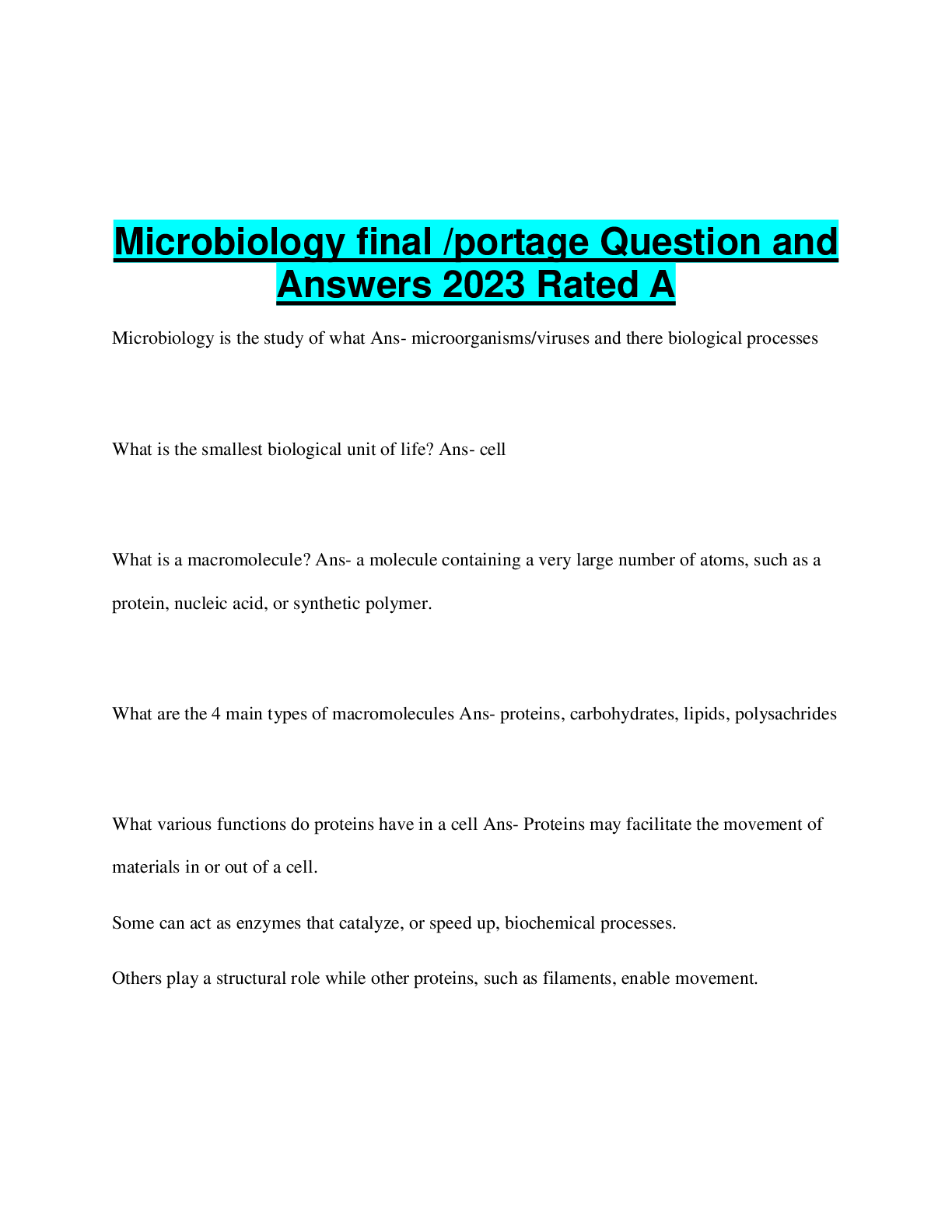
Buy this document to get the full access instantly
Instant Download Access after purchase
Buy NowInstant download
We Accept:

Reviews( 0 )
$9.00
Can't find what you want? Try our AI powered Search
Document information
Connected school, study & course
About the document
Uploaded On
Feb 11, 2023
Number of pages
45
Written in
Additional information
This document has been written for:
Uploaded
Feb 11, 2023
Downloads
0
Views
126




.png)
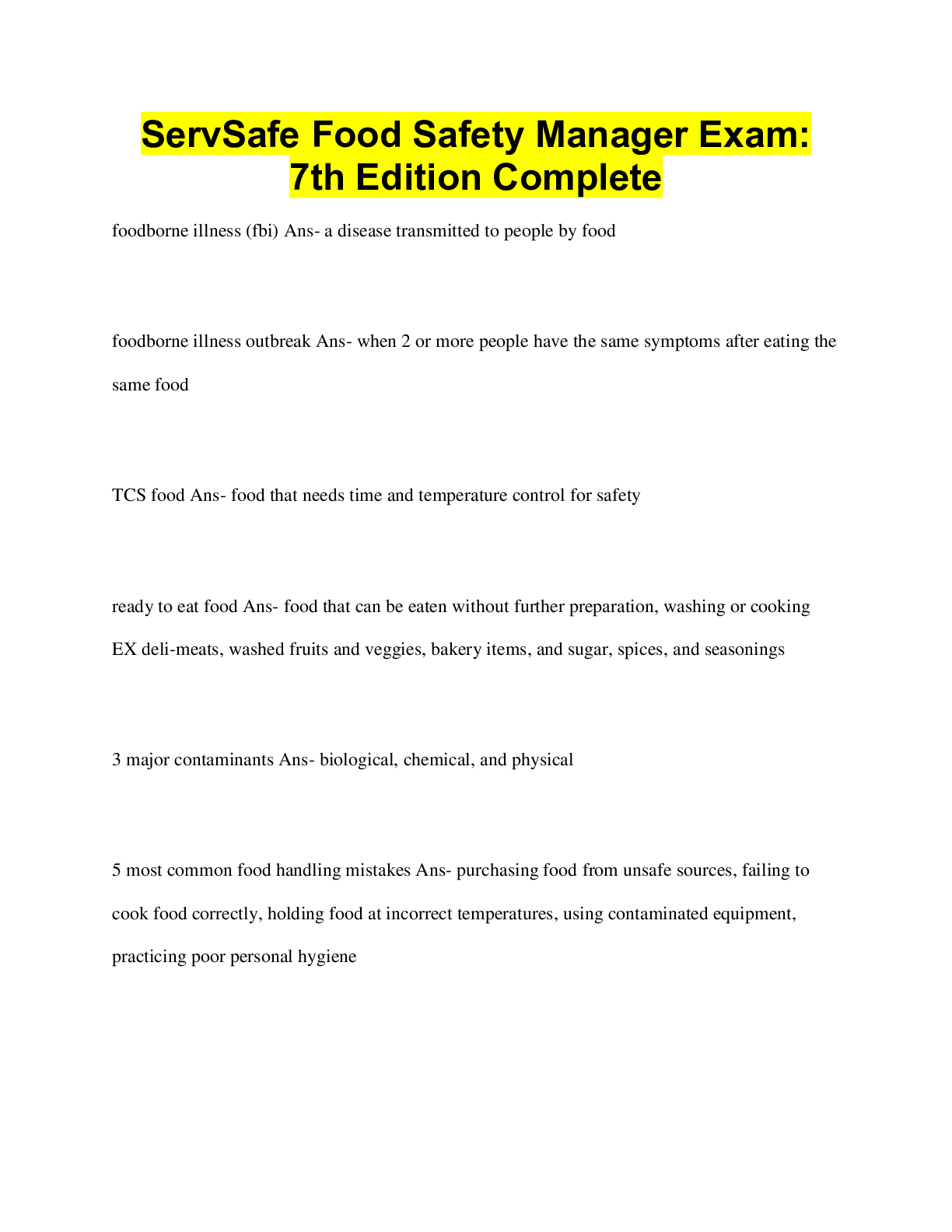
.png)

